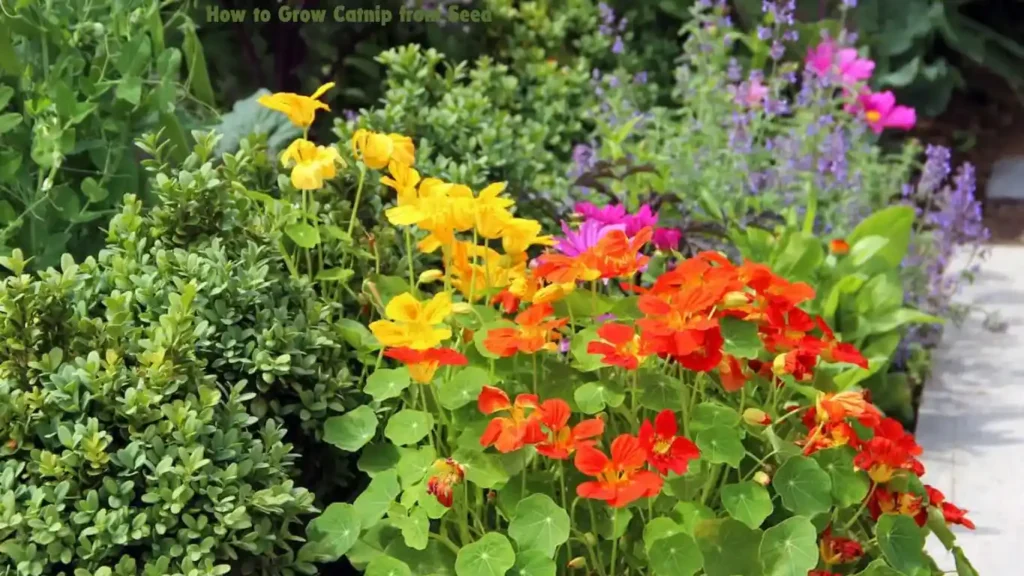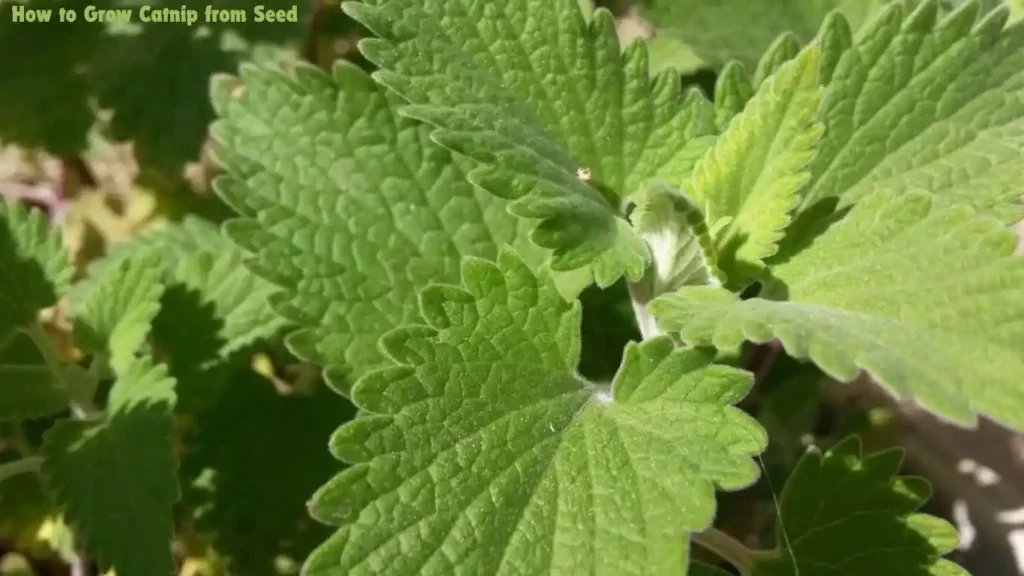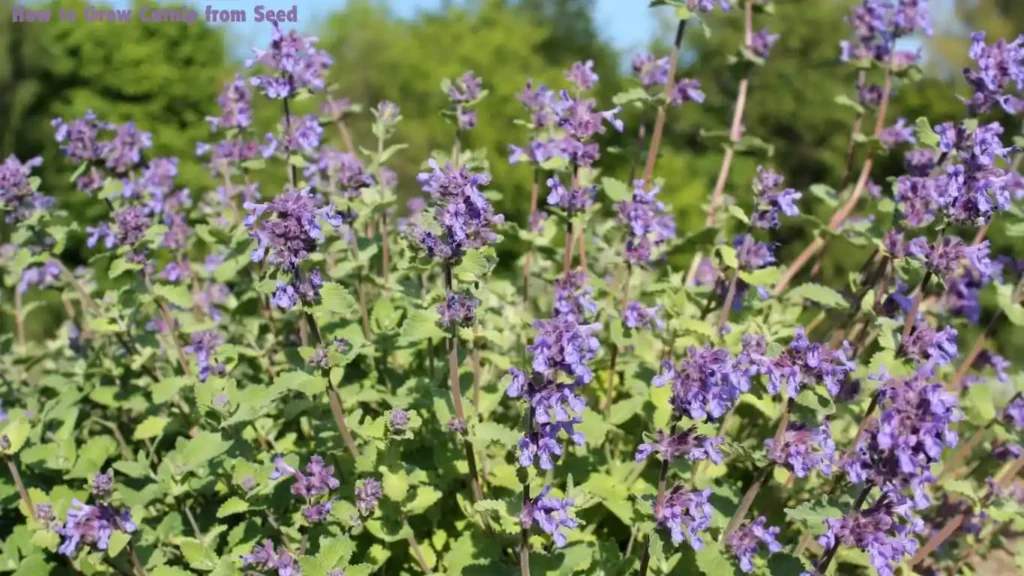How to Grow Catnip from Seed- Care, Diseases & Uses
How to Grow Catnip from Seed additionally called Nepeta cataria belongs to the mint family. The leaves contain a nepetalactone which has a very strong influence on the cats; the cats get very playful and full of energy.
Apart from influencing behavior in cats, catnip has some uses such as being a medicine, encouraging the presence of useful insects, and vivid blue, lavender-like flowers.
Where to Grow Catnip
Catnip plant requires direct sunlight, but it can also grow well in a semi-shaded area. Regardless of if the soil has been prepared for planting in a garden or in a pot, ensure the plant gets adequate light.
It can grow in different climates; however, it prefers temperate regions that allow good drainage of the soil.
How to Grow Catnip from Seed
Propagation of catnip from seeds is very easy but some preparations should be made in order to yield good results.

The seeds are tiny and require light to grow, which means that they should not be planted too deep into the soil.
When to Sow Catnip Seeds
Another option to grow catnip is by sowing seeds; the ideal time for the same is soon after the last frost in early spring.
If you live in a warmer environment, you can plant the seeds directly on the ground, in the outdoors.
If you’re beginning in indoors, it’s recommended that you should plant them about 6-8 weeks before the date when the first frost is expected.
Preparing the Soil
How to Grow Catnip from Seed grows best in slightly alkaline to neutral soil with a pH range of approximately 6. 0-7. 0. Make sure that the soil is draining well as catnip does not do well when its roots are in water-logged conditions.
Incorporation of compost into the soil before planting ensures that the soil is of good quality in terms of composition in relation to good planting.
How to Sow Catnip Seeds
Cold Stratification: Catnip seeds would perfectly need cold stratification which replicates winter so as to encourage germination.
However, to carry out the process easily, this requires germination of the seeds through placing them in the refrigerator for 2-4 weeks first.
Planting: After sorting them, sow the seeds on the surface of the soil then pat lightly without burying it too deeply. Seeds require light to grow, they have to germinate.
Watering: The soil should be moist but not waterlogged during the germination process which may take approximately 10-20 days.
How to Care for Catnip
It becomes easy to take care of catnip after your seeds have germinated and the seedlings have developed into plants.
Sunlight
How to Grow Catnip from Seed Plants requires full sun, meaning that it should be placed in an area that receives not less than six hours of direct sunlight every single day.
If grown indoors, locate them close to a southern-facing window, or use artificial grow lights.
Watering
Give the plants an adequate amount of water but make sure that the soil is dry before you water the plant again.

Catnip is drought resistant once the plant has been established but it needs frequent watering when it is young.
Fertilizing
How to Grow Catnip from Seed requires little fertilization but a compost or an all-purpose fertilizer applied once or twice in the course of the growing season should be given to the plants.
How to Propagate Catnip
Besides the propagation from seeds, catnip plants can also be propagated by using cuttings or division.
To propagate cuttings, make a 4-6 inch cutting, pinch off the lower leaves put the cutting in a glass of water or jar, and wait for it to root.
For division, pull up a mature plant, take off the root ball divide it, and replace it back again.
How to Prune Catnip
Pruning your catnip on a regular basis makes the plant free from dead growth and the new growth will start to emerge.
This is done immediately once the plant has bloomed; the plant is pruned by cutting a third of it.
It’s the same as pinching the plant to prevent it from having overly long stems and waiting for the second blooming.
Growing Catnip – Pests and Diseases
Pest infestation is rare in catnip, nevertheless, the plant may occasionally be plagued by aphids whiteflies or spider mites.
You can get rid of these pests by rinsing the plant with a powerful spray of water or you can use the insecticidal soap.
Powdery mildew may occur especially if the plant is placed in an area with high humidity; therefore ensure that it gets proper air circulation and water it sparingly.
Additional Catnip Growing Tips
Mulching: All around the plant base, the use of mulch acts as a moisture-conserving and weed suppressor.
Harvesting: The catnip plant will be most potent if the catnip leaves are harvested before the flowers have blossomed.

All one has to do is remove the stems and the plantlets just hang in inverted positions and dry.
Storing: After it has dried out completely, put it in an airtight container and preserve it for use later.
Ways to Use Catnip
How Catnip Affects Cats
It is quite known how catnip works with regard to cats. When cats smell nepetalactone, it attaches to all the receptors present in the cats’ noses, causing a feeling of euphoria in the cats.
Just like humans have their tastes and preferences, not all feline respond to catnip; in fact, only 70% of cats are genetically wired to.
Catnip for Dogs
Surprisingly, in the same manner, as it has an arousing effect on cats, catnip has a sedating effect on dogs, at least it does not make dogs playful.
This one can be used in making tea that will enable you to calm an anxious dog.
Catnip vs. Cat Grass
Moreover, catnip and cat grass though both are loved by pets are altogether different from each other.
While cat grass usually consists of a mix of grasses such as wheat grass or oat grass it is beneficial for the digestion of cats whereas catnip has behavioral effects only.
Benefits of Catnip for Your Kitties
Helps in reducing stress by offering; An excellent source of mental stimulation and endowment.
Can be useful to reduce aggression or a stressed/ anxious cat.
Serves as a natural to encourage physical exercise since it occurs in a natural environment.
Benefits of Catnip for Humans
But, they have discovered that catnip is not only reserved for cats alone. The herb has several benefits for humans as well, including The herb has several benefits for humans as well, including:
Relaxation: It’s worth mentioning that catnip tea is effective in reducing anxiety and stress.
Digestive Aid: When taken as tea it can help ease indigestion and conditions associated with gas production.
Insect Repellent: One of the practical uses of catnip oil is that it is used as a natural insecticide, especially for mosquitoes.
Conclusion
Planting your own catnip from seed is a great way to have the plant yourself as well as provide your cats.
If taken care of well and cared for appropriately the herb will grow much to your advantage and be used in various ways.
Not having catnip in your garden if you’re growing it for your cats, taking it in tea form or even getting rid of insects is unthinkable.
FAQS
Is catnip easy to grow from seed?
Of course, it is easy to plant fresh and pesticide-free catnip seeds. Catnip is an herbaceous plant that germinates well from seed produced in both outdoor and indoor settings.
How many catnip seeds per hole?
Take a piece of catnip and with a sharp tool, make a hole that is 3mm or 1/8 inch then you place 3 to 4 catnip seeds inside the hole made on the pellet.
Is growing catnip profitable?
Growers specializing in catnip can make a very good income with just a small patch of ground. To learn more about growing catnip and other profitable herbs, read: Start Your Own Backyard Plant Nursery.
Is catnip fast-growing?
It is essential for the mint family and can rapidly assume control over your nursery. Catnip fills in USDA zones 3 through 9. Catnip develops rapidly and can take over different regions of the nursery.
Is it safe to boil catnip?
Catnip tea is a protected and reviving treat for your feline that is made by soaking the leaves of a catnip plant in bubbling water, then, at that point, serving over ice.
Also Read
